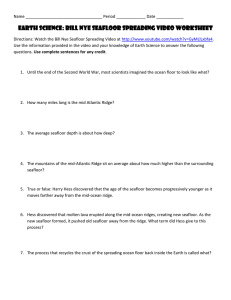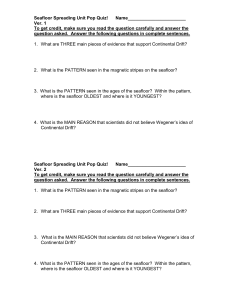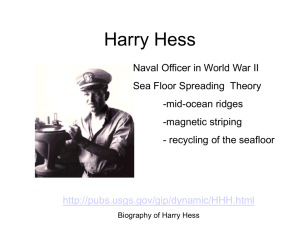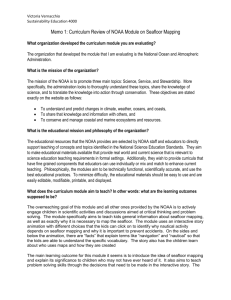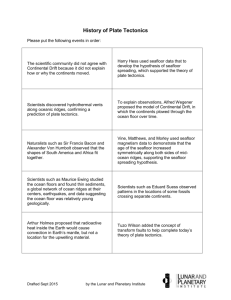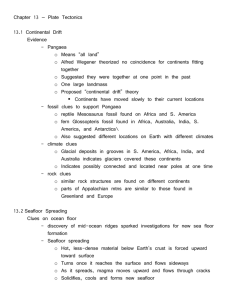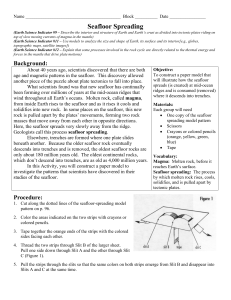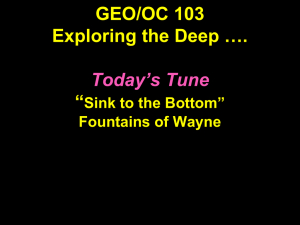Harry Hess handout
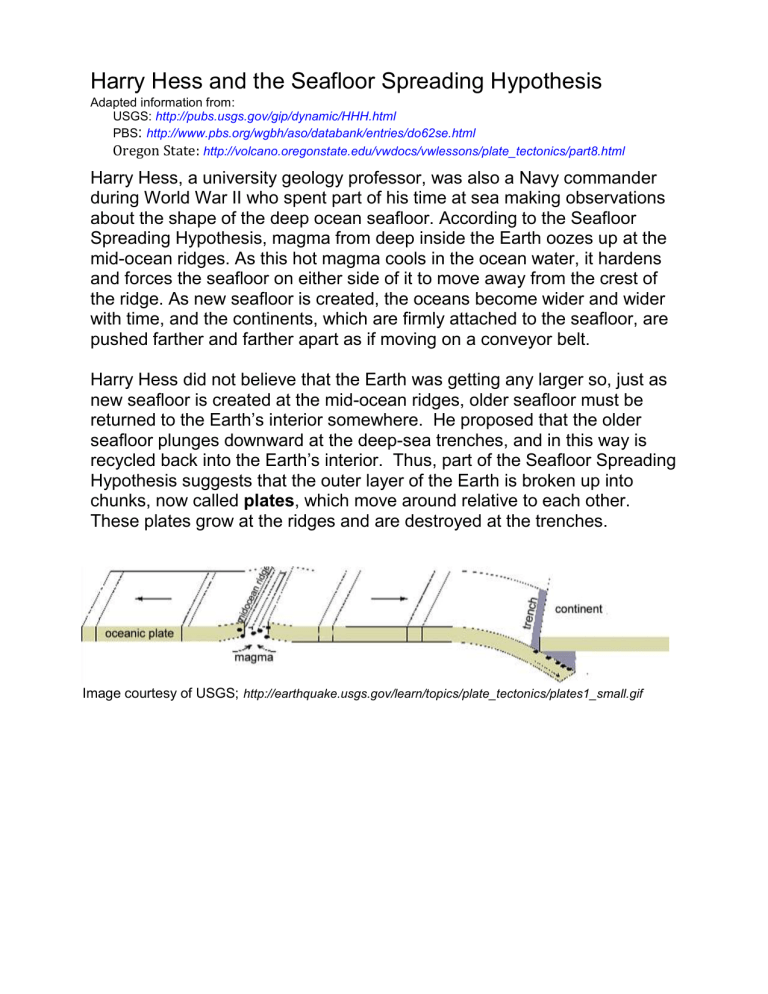
Harry Hess and the Seafloor Spreading Hypothesis
Adapted information from:
USGS: http://pubs.usgs.gov/gip/dynamic/HHH.html
PBS : http://www.pbs.org/wgbh/aso/databank/entries/do62se.html
Oregon State: http://volcano.oregonstate.edu/vwdocs/vwlessons/plate_tectonics/part8.html
Harry Hess, a university geology professor, was also a Navy commander during World War II who spent part of his time at sea making observations about the shape of the deep ocean seafloor. According to the Seafloor
Spreading Hypothesis, magma from deep inside the Earth oozes up at the mid-ocean ridges. As this hot magma cools in the ocean water, it hardens and forces the seafloor on either side of it to move away from the crest of the ridge. As new seafloor is created, the oceans become wider and wider with time, and the continents, which are firmly attached to the seafloor, are pushed farther and farther apart as if moving on a conveyor belt.
Harry Hess did not believe that the Earth was getting any larger so, just as new seafloor is created at the mid-ocean ridges, older seafloor must be returned to the Earth’s interior somewhere. He proposed that the older seafloor plunges downward at the deep-sea trenches, and in this way is recycled back into the Earth’s interior. Thus, part of the Seafloor Spreading
Hypothesis suggests that the outer layer of the Earth is broken up into chunks, now called plates , which move around relative to each other.
These plates grow at the ridges and are destroyed at the trenches.
Image courtesy of USGS; http://earthquake.usgs.gov/learn/topics/plate_tectonics/plates1_small.gif
